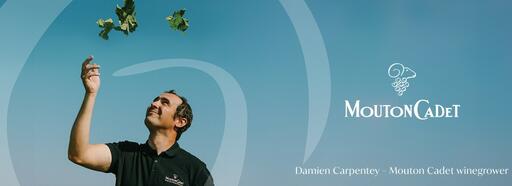Haut-Médoc
Haut-Médoc is the Left Bank’s biggest appellation with a diversity of flavors and quality wines. Age-worthy Cabernet Sauvignon and easy drinking Merlot-based wines.
Haut-Médoc has a diversity of qualities and styles of red wines: age-worthy, structured Cabernet Sauvignon wines of Grand Cru Classé to high-quality-yet-crushable Merlot-based blends.
A diversity that comes from the range of soil types and proximity to the Gironde estuary. If you know where to look, the price to quality ratio is one of the best in Bordeaux.
After sunset at Château Cantemerle in Haut-Médoc.
Haut-Médoc Wines
Atypically for the Left Bank, many wines in Haut-Médoc are Merlot dominant alongside Cabernet Sauvignon. This means that it's often possible to find smoother tannins, red plum characters, and wines that are easier to enjoy after less time in the cellar.
It’s important to note that only red wines can carry the “Haut-Médoc” label.
Because of the diversity of soils, amazing, age-worthy Cabernet Sauvignon-dominant wines are available here, with loads of tannin, deep color, and herbaceous notes, cassis, tobacco, and leather.
This appellation is often overlooked as people flock to better known areas, but it can offer some great value. However, with 5 Grands Crus Classé wineries here, it's easy to find high-quality!
Haut-Médoc Wineries To Know
Château La Lagune - the southernmost Cru Classé winery in the Médoc, a Third Growth offering Cabernet Sauvignon dominant, age-worthy wines.
Château La Tour-Carnet - Fourth Growth, and also the largest Cru Classé winery in the Médoc with over 175 hectares.
Château Belgrave - Third Growth situated near Saint-Julien with equal parts Cabernet Sauvignon and Merlot planted.
Château Camensac - Fifth Growth moving toward biodynamic viticulture.
Château Cantemerle - Fifth Growth with a high percentage of Cabernet Sauvignon.
Château Bellevue - They have a 100% Petit Verdot - one of the few single variety wines in Bordeaux
Haut-Médoc Terroir
The biggest appellation of the Left Bank, Haut-Médoc spans 37 miles (60km) north to south, which means there is lots of diversity in the terroir. Gravel outcrops, clay, and the distance from the Gironde Estuary, all play a crucial role in what type of terroir a specific winery will have.
Closer to the estuary the temperature shifts are more moderate, not too warm or cool. The further inland you go, the faster the temperature can drop at night.
All of this diversity means you can find a range of wine styles and quality. Terrific, age-worthy Cabernet Sauvignon-based wines are more common at the northern end of the appellation, where the soil has more gravel.
Haut-Médoc Facts and Classification Information
- 10,670 acres (4318 ha) in size
- 301 winemakers
- Grapes planted: 49% Merlot, 44% Cabernet Sauvignon, 4% Petit Verdot, 3% Cabernet Franc
- Established as an AOC in 1935.
- Range of gravel mounds, clay, and sand are the major soil types.
- The largest appellation on the Left Bank, also one of the few with more Merlot than Cabernet Sauvignon planted.
- 5 Grands Crus Classé wineries
- 1 Third Growth
- 1 Fourth Growth
- 3 Fifth Growths
























